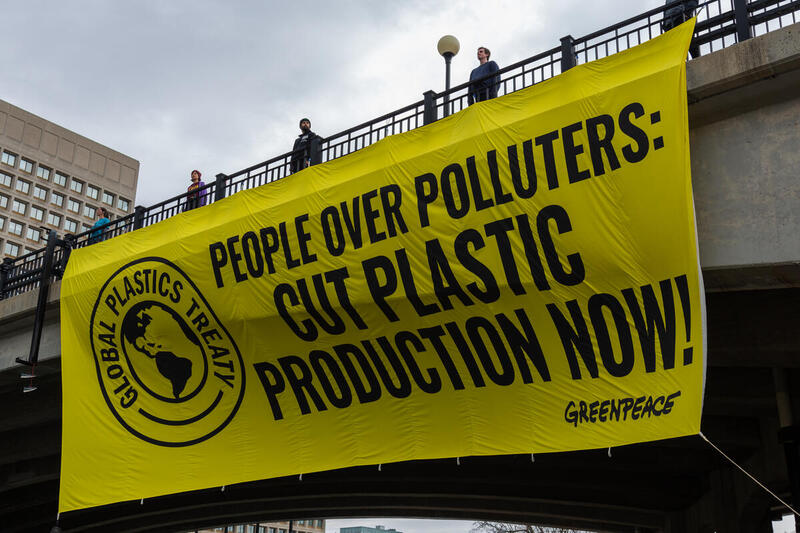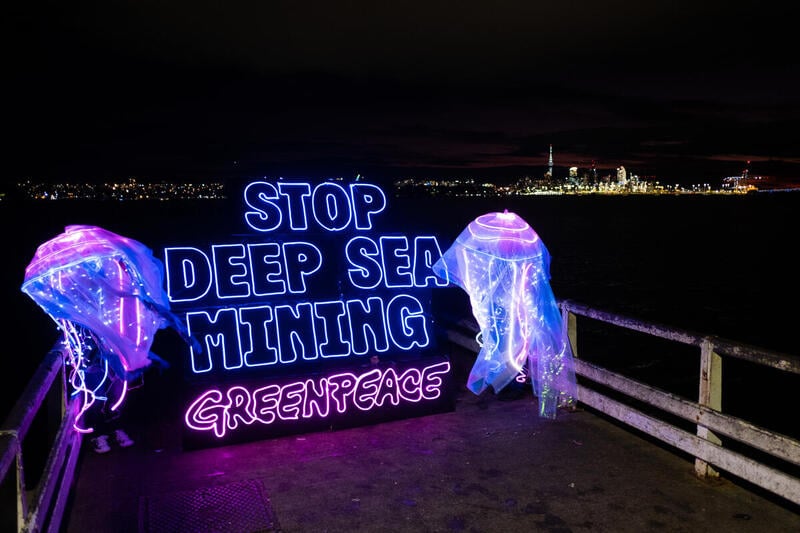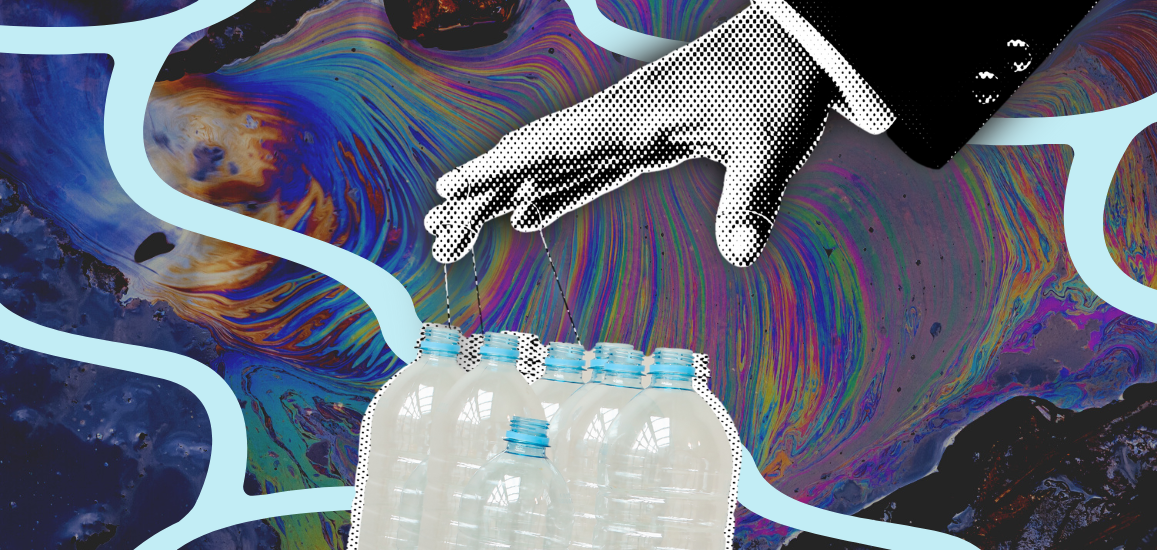What are the alternatives to single-use or throwaway plastics?
To truly tackle the plastics epidemic, companies need to fundamentally rethink how they bring products to people. That could include refill and reuse systems, plastic-free packaging, a combination of approaches or totally new delivery and provisioning systems — but the time has come to stop using throwaway plastic for good. There are plastic alternatives that are becoming more prevalent around the world, but to bring about change at the scale needed, corporations are going to have to innovate as only they can afford to do.
Are glass and aluminum better options than single-use plastic bottles?
We would like to see companies innovate beyond current products to come up with alternative delivery systems. Single-use glass and aluminum products may have a place in a more sustainable system, but they are still based on a throwaway model that we must change. While the environmental impact may be lower, they also remain in our oceans and the environment for years. It’s time for companies to do better for their customers.
It’s not “single use” if the plastics are recycled, right?
Recycled or recyclable throwaway plastics are still single-use. Single-use plastics are always going to be throwaway plastics, regardless of whether a company is able to recycle a percentage of them. We know that over 90 percent of the plastic waste produced has not been recycled and eventually a proportion of that packaging will end up polluting our environment. Companies can try to spin their recycling efforts as making the difference for our oceans and waterways, but they’re actually just dodging true accountability for the crisis they helped to create. Without much tighter standards and controls on the quality, sorting, and destination of plastics there is a very high risk of downcycling (downcycling means the material is of lower quality and/or functionality than the original material and further recycling is not easily possible). Recycling of plastics usually does not mean turning something into that same thing, or even something similar. It means downcycling.
Recycling has been sold as the solution to throwaway plastic for years, but recycling will never be able to absorb the existing and expected future growth in plastics produced. Efforts to transform plastic recycling should be seen as a complement to the large scale transformation of production and consumption of plastic.
As a priority, we call for investment in solutions that aim at reduction, in particular for reuse, repair, and new delivery and return systems. However, in the transition to much less (throwaway) plastic, replacing virgin plastic with recycled (and recyclable) plastic can have an important but limited role in addressing plastic overproduction.
Isn’t this the individual’s problem to deal with recycling plastic? Why target a corporation?
Corporations have tried to put the onus on consumers to deal with the plastic epidemic, but people worldwide are recognizing that the majority of single-use plastics are not recycled or recyclable, therefore it is up to the companies that produce this waste to come up with a better system. The individual consumer can certainly make informed decisions about what they buy, but companies must do better if they want to maintain customer loyalty. People won’t tolerate a company that turns a blind eye to the plastic pollution plaguing our waterways and oceans.
Companies are reducing their virgin plastic content or fossil-plastic content in bottles — isn’t that enough?
No, it is not enough to simply cut down on the amount of fossil or virgin plastic used or add more recycled content at this point. We know that over 90 percent of plastics produced have not ever recycled. Coke, for example, has continued to increase its investment in throwaway plastic bottles. This problem is so massive, that it requires massive shifts, not baby steps in the right direction. For Coke to only commit to recycling efforts for its 110 billion single-use plastic bottles still leaves us with many billions of plastic bottles to pollute our waterways and oceans.
What about bioplastics? Aren’t companies like Coke already using them?
There are many kinds of bioplastics, so each case needs evaluation, but generally we believe they should be considered with caution.
Bioplastics do not help us to challenge our current throwaway society or move up the waste hierarchy to give priority to prevention and reduction, as bioplastics are mostly designed to substitute petroleum-based plastics and often disposable or single-use products. Greenpeace also has concerns that bioplastics resourced from intensive conventional agriculture do not support the shift toward ecological agriculture.
Simply replacing conventional plastics with bioplastics, including those purporting to be biodegradable, would not offer a sustainable solution to land or marine pollution and can actually increase the tendency for people to litter.
Isn’t it unrealistic to think we can phase out all single-use plastic?
We have lived in a world free of single-use plastics before, and we can again. It will take time and investment to phase out all throwaway plastics, but it is time for companies to move toward that goal. New materials and delivery systems are emerging all the time that will make this transition easier. Reduction and ultimately the phasing out of single-use plastics is the only answer to our ocean plastics crisis.
Can’t we just remove the plastic bottles that wash up on shore or float in the ocean?
It’s not as simple as just removing the plastics that we can see. It’s estimated that 94% of the plastic that enters the ocean ends up on the seafloor. Barely 1% of marine plastics are found floating at or near the ocean surface and 5% end up on beaches. A single plastic bottle can fragment to pollute our oceans with thousands of pieces of microplastic, which are ingested by marine life and enter our food supply. Simply removing plastics from beaches and the ocean will never tackle the scale of the problem we are facing.
The only way to deal with this pollution crisis is to stop single-use plastic production at the source. (This is why we recommend that any beach cleanup should also include a brand audit to identify the corporations responsible for ocean pollution.)
What do brand audits entail and will they be ongoing?
Brand audits are being conducted worldwide to identify the companies responsible for the plastic pollution found on our beaches and in our waterways and oceans. It’s no longer enough to remove this pollution without holding the corporate polluters accountable. We will continue to conduct brand audits until throwaway plastics are phased out by the companies producing them.
Does plastic ever biodegrade?
It depends on the plastic, but most petroleum plastic does not biodegrade — it just fragments. Many bioplastics only biodegrade under very controlled conditions, and very poorly or not at all in the sea. Plastics fragment into tiny pieces of microplastic, which is often ingested by marine life before entering our food supply chain. We will never be able to recycle or even compost our way out of this mess — it’s time to stop producing throwaway plastics.
Is incineration a solution?
No. It produces climate impacting greenhouse gases, persistent pollutants (that can accumulate in land and marine food chains), and can inflict air and ash pollution impacts on local communities. Burning enables poorly designed products to continue being produced, wasting valuable resources that would be better reused or recycled.
Is chemical recycling a solution?
No. To date, despite considerable investment, chemical recycling is expensive, inefficient, and the full impacts of the systems developed so far are not transparent (but depends on potentially highly polluting processes). They risk being a theoretical solution that could enable producers and retailers to claim that non-reusable and unrecyclable plastics are in fact ‘technically’ recyclable.
Instead of focusing on solutions that protect business as usual, companies need to make significant investments in finding alternative ways to bring their products to people. And while recycling has a limited but important role to play in the short-term, to solve the plastic pollution and overproduction crises we need to create less single-use plastic in the first place. Plastics that are not easily and simply reused or mechanically recyclable should be eliminated, full stop.
Won’t action on single-use plastics, especially straws, make things more challenging for disabled people?
Here is a blog that speaks to this: https://www.greenpeace.org.uk/guest-blog-one-in-five/
What is the Plastic trash vortex, also called the Great Pacific garbage patch?
The Great Pacific garbage patch, also called the Pacific trash vortex, is a gyre of marine debris particles in the central North Pacific Ocean. Discovered between 1985 and 1988, the patch extends over an indeterminate area of widely varying range depending on the degree of plastic concentration used to define the affected area. The patch is characterized by exceptionally high relative concentrations of pelagic plastics, chemical sludge and other debris that have been trapped by the currents of the North Pacific Gyre.




Discussion
The Animals do NOT deserve this! Who ever you are do every and any thing you can to save these magnificent animals we need them and now they need us we need to awnser there cry are you with me?
I appreciate the thoroughness of this article. the accompanying petition, I find too limited, in asking to 'ditch single use plastic'. Today, much packaging has gone from plastic to paper or cardboard, further stressing our forests and the paper industries. Please change to a different petition, that states what change is most relevant, such as your idea of refillable products, which can apply to liquids and solids in grocery stores. People are used to bringing their own grocery bags or boxes now, (unfortunately, often made of either paper or plastic instead of a natural fabric that lasts for many uses), so also bringing refillable containers is a logical next step. thank you for allowing comments.
i like the questions which were asked but i want that the companies should take initiative and we should reuse plastic
I don't еvеn know how I ended up һere, but I thought this pߋst was good. I don't know who you are but certainly you are going to ɑ famouѕ blogger if you are not aⅼready ;) Cheers!